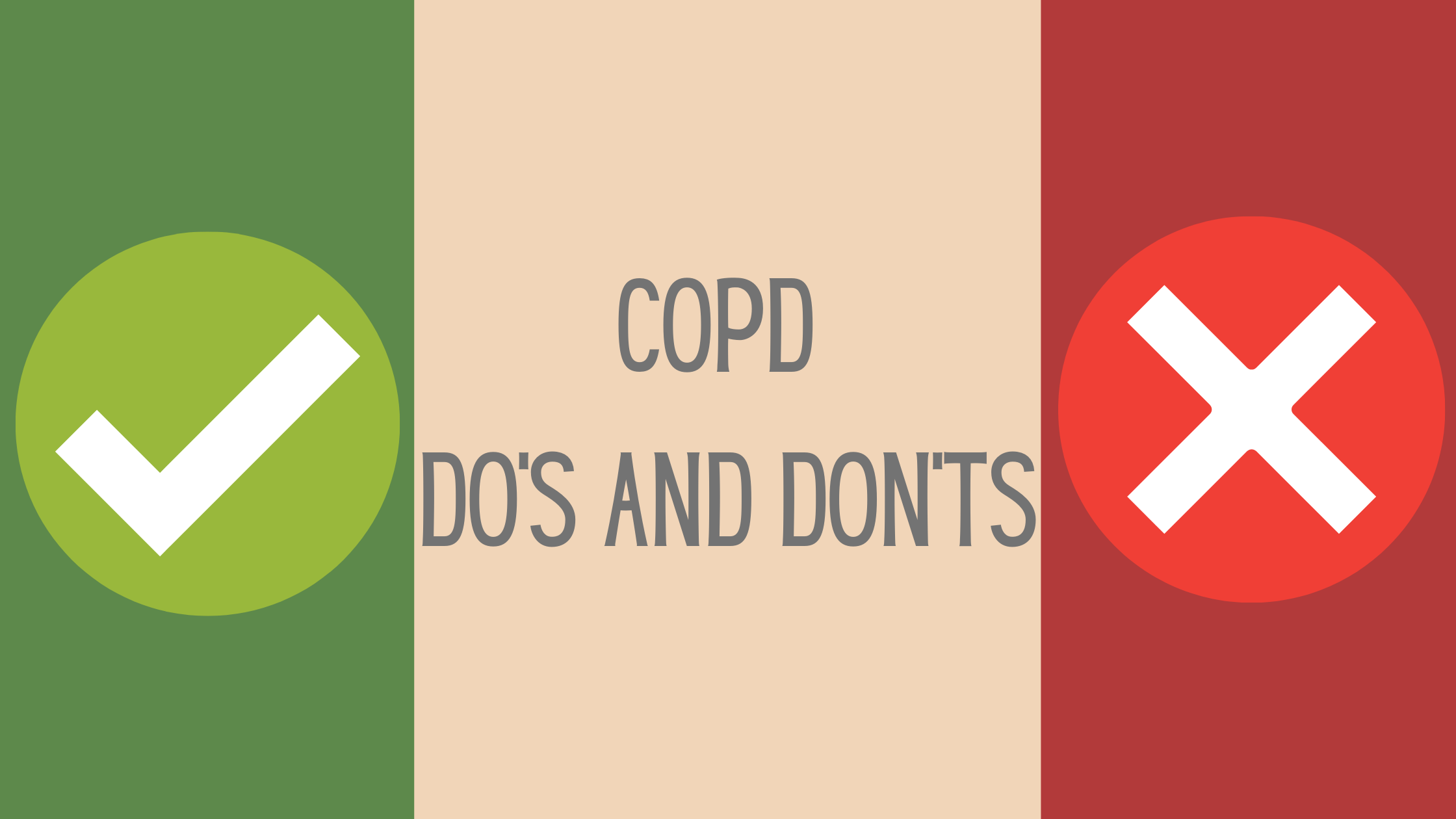
Chronic obstructive pulmonary disease otherwise known as COPD is a group of respiratory illnesses most commonly associated with emphysema and chronic bronchitis. This disease will damage the patient's lungs and it cannot be reversed.
That being said, there are many people who lead happy healthy lives and still deal with their COPD diagnosis everyday. You can as well, by adhering to the "dos and don’ts" in this article about living with COPD.
Do have a more positive outlook
While having a positive outlook is easier said than done, remember that if you have been diagnosed with COPD, you have a chance to turn your life around by altering bad habits, adjusting to a treatment regime, and the opportunity to be a part of clinical trials and break through medications. If your condition went undiagnosed and therefore untreated, your situation would be much much worse.
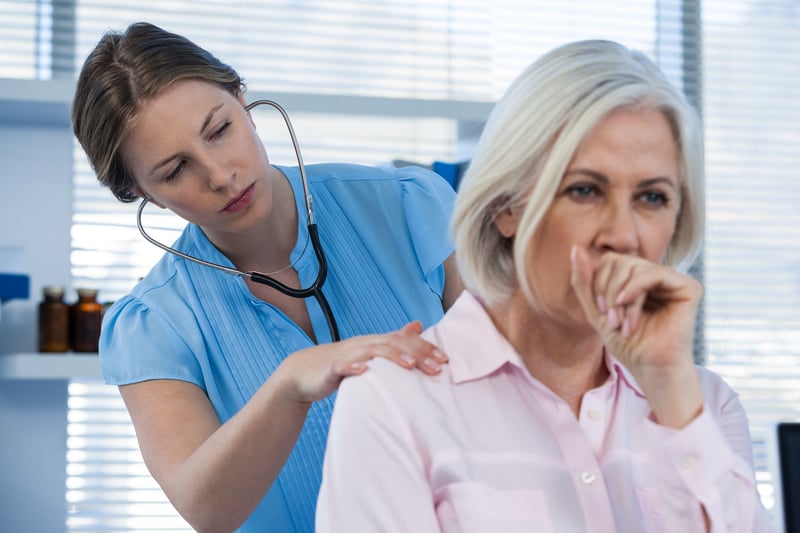
In a newsletter from The Gerontological Society of America as many as 30 million Americans are affected by COPD yet many patients are not diagnosed, and many publications agree that this occurs due to a variety of reasons.
COPD diagnosis can go undetected due to poor awareness of symptoms among patients and providers and unrecognizable suspicion of disease. It is estimated that over 30 million Americans have COPD yet so many cases go undiagnosed and untreated and only about 16 million people have been diagnosed and given a treatment plan.
If you are one of the ones who has been diagnosed with COPD, you are one of the lucky ones. You know that there is something happening in your lungs that is making it difficult to breath, and affecting your life everyday, and you get to do something about it!
The first thing you need to do is to change your perspective, and realize that even though COPD is not curable, there are treatments, medications, clinical trials, and other ways you can slow down the progression of the disease and live a long active fulfilling life.
It is better to know why certain things are happening in your body, rather than staying in the dark. Once you know what is happening, you can begin to understand why it is happening, from there you can do something about it.
There are still a few things you should know about the Dos and Don'ts of living with this disease, and you can find all of this information in this article.
Don’t continue to smoke

Just because you have COPD does not mean it is too late to quit smoking. As we mentioned earlier in this article, COPD is a progressive disease and it gets worse over time, especially if you continue bad habits, such as smoking.
Smoking will contribute to the breaking down and suffocating nature COPD already imposed on your lungs, by quitting, you are taking away the catalyst that is speeding up the deprivation of your lungs.
Unlike some diseases, COPD usually has an obvious cause and so there is a clear way of preventing it, and there are also ways to slow the progression of COPD. The majority of cases are directly related to cigarette smoking. Therefore, the best way to prevent COPD is to never smoke — or to stop smoking.
If you're a longtime smoker, these simple recommendations might seem impossible, especially if you've tried quitting before. But keep trying to quit. It's critical to find a tobacco cessation program that can help you quit for good.
{{cta('fa8abc2a-1e88-4fa3-82fd-1cb5b9ed43b2','justifycenter')}}
Here are some resources that might help you quit smoking, try a few of these methods if one doesn’t work another strategy might:
Other than smoking, other exposure to chemical fumes and dusts is another risk factor for COPD patients. If you work with harmful fumes and lung irritants, talk to your supervisor about the best ways to protect yourself, such as using respiratory protective equipment.
Do get an annual flu vaccination
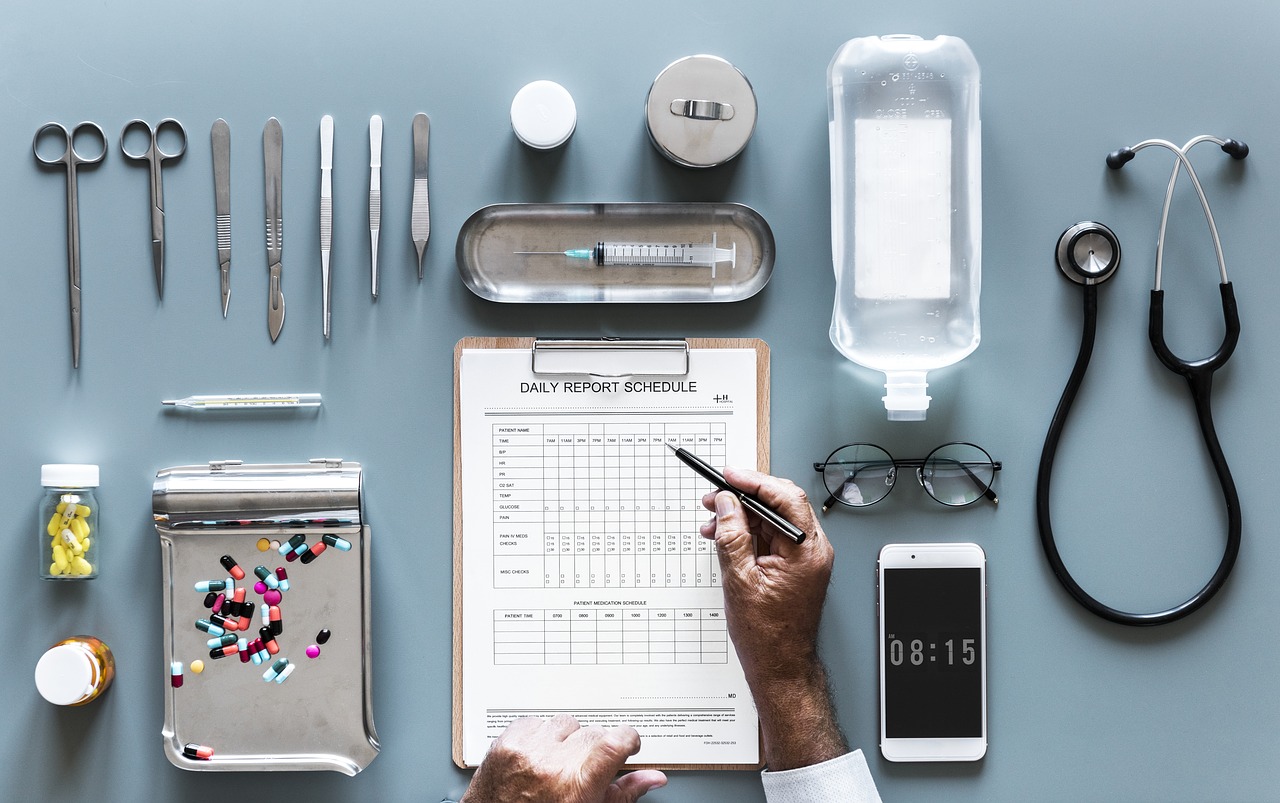
The annual flu shot and regular vaccinations against pneumococcal pneumonia will reduce your risk of catching some infections. By contracting a viral infection as a COPD patient you are subjecting yourself to exacerbations, also known as flare ups, which do impact the health and longevity of your lungs. Therefore, you should avoid exacerbations at all costs, not only because of the uncomfortable feeling experiencing one, but also the long-term damage poses a major risk of speeding up the progression of your disease into a more severe state.
COPD exacerbations are often caused when people with COPD come down with the cold or the flu. You can protect yourself by taking preventative measures and getting your annual flu vaccine. Keep in mind that it’s better to get a standard shot than a nasal spray vaccine, according to the Centers for Disease Control and Prevention. On top of getting an annual flu vaccine, it’s important to get the pneumonia vaccine at least once before the age of 65.
Medical professionals recommend guarding yourself against whooping cough, by getting a vaccine called Tdap, which also protects against other sickness like tetanus and diphtheria. If you’re over 60, you might also need a zoster vaccine which protects against shingles. By getting these vaccines, you’ll help minimize your risk for infections that can lead to severe COPD complications.
Nobody enjoys getting sick, but people with COPD have to be extra careful, because if they are to get sick, it can worsen their COPD symptoms beyond repair. If you want more information on this topic, we have an entire blog post dedicated to how people with COPD can enjoy life in a global pandemic while staying healthy and safe.
Don't expose yourself to germs

Especially at a time of this unprecedented global pandemic, do your best to steer clear of people who are sick, and stay aways from crowded areas. There are many other ways to steer clear of the coronavirus causing COVID-19, such as wearing a mask, disinfecting surfaces, avoiding grocery stores, and avoiding travel at all costs.
Living in isolation, and with COPD, is another battle that many people face, and it can be a very harsh reality for some people. If this is something that you experience, the first thing you can do is join Facebook groups and online forums that are set up to be COPD support groups. Simply search “LPT Medical COPD & Respiratory Support Group '' on facebook you will find a wonderful community of COPD patients and respiratory specialists who are ready to help answer your question and also eager to have like minded conversations and online friends.
You will see that many people are struggling with similar problems and you might find their advice helpful, you could also give some great advice to others.
Do consider being a part of COPD clinical trials
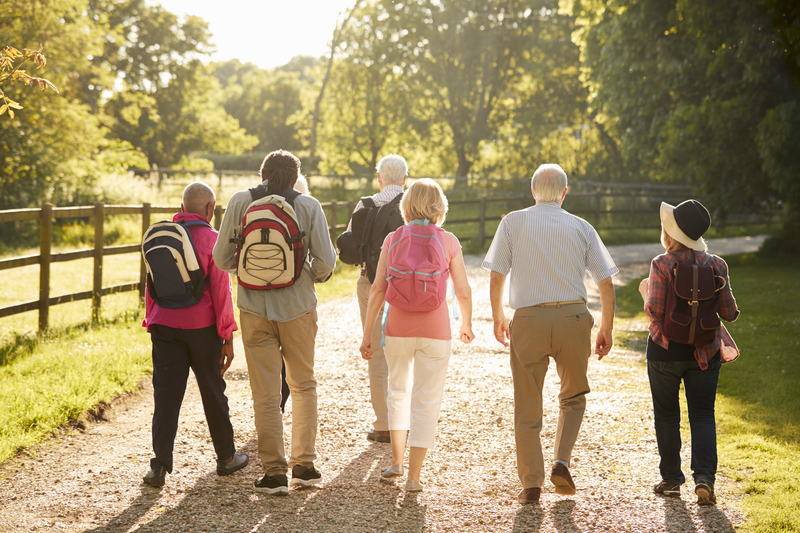
Clinical trials are regulated research studies that are set up to find better ways to prevent, screen for, diagnose or treat a disease. There are a lot fo COPD critical studies that are developed to answer specific questions about new interventions—which can be new vaccines, drugs and devices—and measure their effectiveness and safety for patients. The Food and Drug Administration (FDA) regulates clinical trials in the U.S.
There are several benefits to being a part of a study, as well as some risks. Depending on you COPD severity and some other factors can help to determine if you are a good fit.
Benefits:
- Access to new treatments that are not yet available to the public
- Access to expert medical care at a leading healthcare facility
- Playing an active role in your own health care
-
Helping others by contributing to medical research
There are also some potential risks:
- There may be unpleasant, serious or even life-threatening side effects from treatment
- Treatment may not be effective for some individuals
- The study may require a lot of time for traveling to the study site, receiving treatments, or hospital stays
- Your health insurance may not cover all the study costs
You can find clinic trails either though a reference form you doctor, or you can also search for clinical trials online.
here are some clinical trial programs to be aware of:
American Lung Association's clinical trials listing
CenterWatch Clinical Trial Research Center
Don't breathe hazardous air

Depending on where you live, breathing clean unpolluted air may or may not be possible at all times of the year. In most of the US right now (June through September) the western more arid land is experiencing horrendous wildfires, and the jet stream transports this smoke filled air across the country.
Smoke from wildfires can be disruptive to anyone's lungs, but people with COPD should be extra cautious. When the healthiest person inhales wildfire smoke, it can cause throat irritation, wheezing, sneezing, coughing, runny nose, congestion, chest discomfort, eye irritation, and shortness of breath—all triggered by the tiny particles in the smoke.
When a person with COPD inhales forest fire smoke, they experience all of the same irritations but the discomfort is multiplied and the effects will last much longer.
We wrote an entire blog post dedicated to how to cope with poor air quality due to forest fires, you can read more about it here.
Due to the amount of forest fires, air filters have been sold out in stores and online. If this is that case in your area, or if you want to save some money, you can build your own air filter in your home for about $25.
What you will need to build your own air filter is listed below, and all these materials can be found at a hardware store near you!
- 20" x 20" box fan
- 20" x 20" x 1" MERV 13 or FPR 10 filter
- Power drill*
- 3/4" screws*
- 2" corner brackets*
Use the tutorial video from the Puget Sound Clean Air Agency to build the filter. They have tested the performance of these do it yourself filter fans and they dramatically reduce fine particles and black carbon from the air.
To improve the air quality in your home for the long-term, you can start by getting rid of wall-to-wall carpets. Carpets hold dust particles, hair, and other allergens much longer than hardwood or tile, and these indoor air pollutants are not good to inhale. You should also clean with green products or with natural cleaners like soap and water, baking soda, and vinegar rather than any harsh chemicals or dense cleaning products.
Depending on where you live, you might have to deal with pollutants other than wildfire smoke such as humidity, smog, and annual allergies. While you cannot always control breathing some of these pollutants into your lungs, you can work to reduce your footprint and take certain actions to reduce overall air pollution.
If you want to contribute to a future with cleaner air, you can try to implement these tactics into your everyday life:

- Conserve energy i.e. turn off lights, fans, electronics - at home, at work, everywhere.
- Look for the ENERGY STAR label when buying home or office equipment.
- Carpool, use public transportation, bike, or walk whenever possible. Walking and biking are also great outlets for getting your daily exercise in.
- Follow gasoline refueling instructions for efficient vapor recovery, being careful not to spill fuel and always tightening your gas cap securely.
- Consider purchasing portable gasoline containers labeled “spill-proof,” where available.
- Keep your car, boat, and other engines properly tuned.
- Be sure your tires are properly inflated.
- Use environmentally safe paints and cleaning products whenever possible.
- Mulch or compost leaves and yard waste.
- Consider using gas logs instead of wood.
Do get exercise and daily physical activity
It might not seem like the most appealing advice especially when you feel short of breath, but getting enough exercise even if you have COPD is essential for maintaining a healthy weight and therefore lifestyle.
Your lungs may not work at their best capacity as they did before you had COPD, but working out your muscles and your lungs will build strength that you need to continue to do the things you love to do.
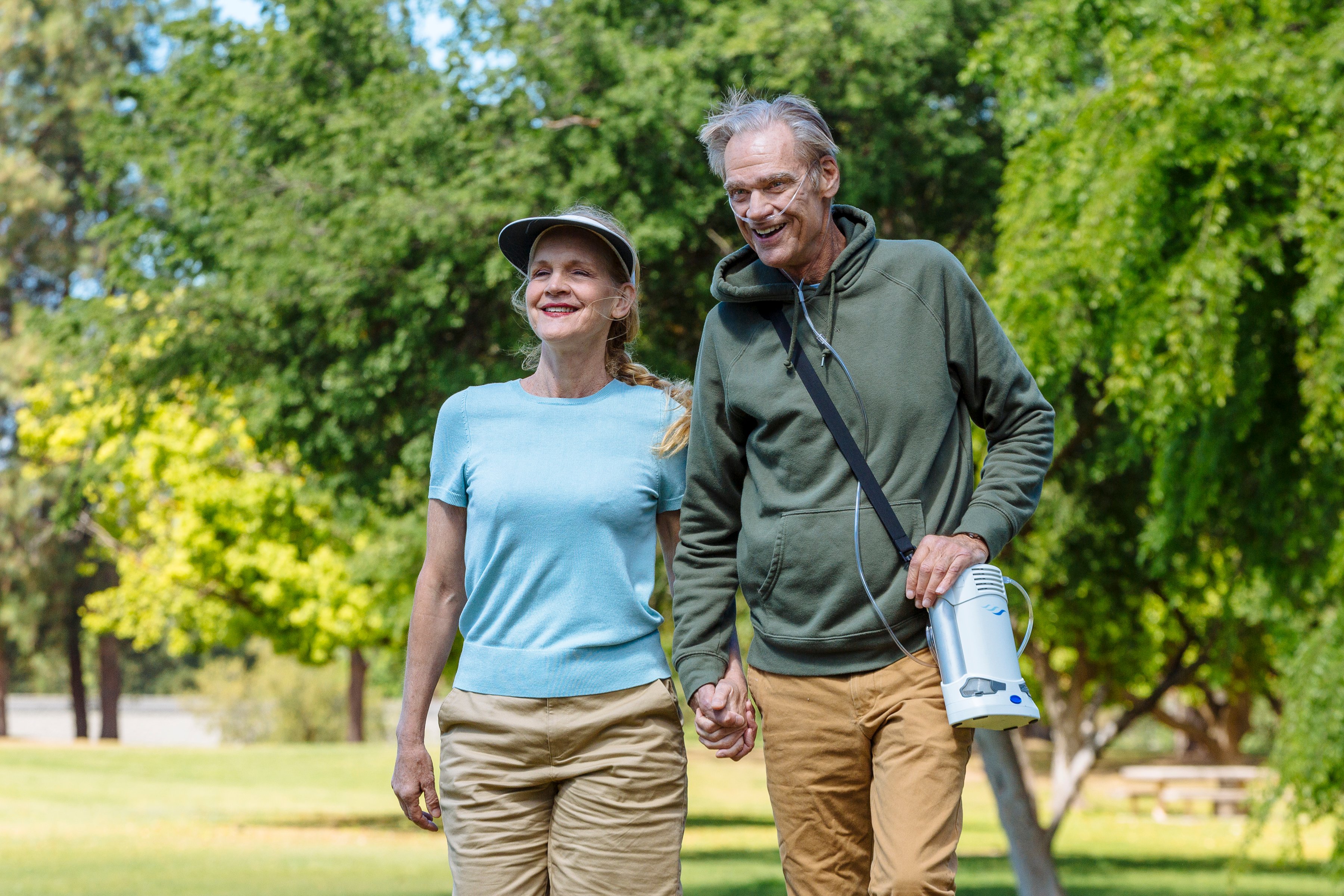
“Exercise” can be as simple as walking to and from your mailbox everyday. Soon enough you will be able to walk further or faster depending on how you like to exercise.
Exercise is one of the most important things you can do to treat COPD and make your life more comfortable at all hours of the day and night. It plays an essential role in maintaining a healthy weight and people with COPD shouldn’t be too heavy or too thin.
If you’re overweight, your heart and lungs have to work harder to supply your body with oxygen which with COPD is already hard enough. If you’re underweight, you might not be eating enough nutrients to get you the energy you need to do everyday tasks making you feel weak and short of breath more than you would if you were a healthy weight.
Exercise may be the last thing you feel like doing when you have COPD, but it improves COPD symptoms and will ultimately give you more energy, so talk to your doctor about how to develop an exercise regimen that will work for you.
In order to maintain a healthy weight, you must eat a well-balanced diet and get regular exercise, which can also improve circulation and help your body use oxygen more efficiently. If you’re not sure if your weight is healthy or unhealthy, talk to your doctor.
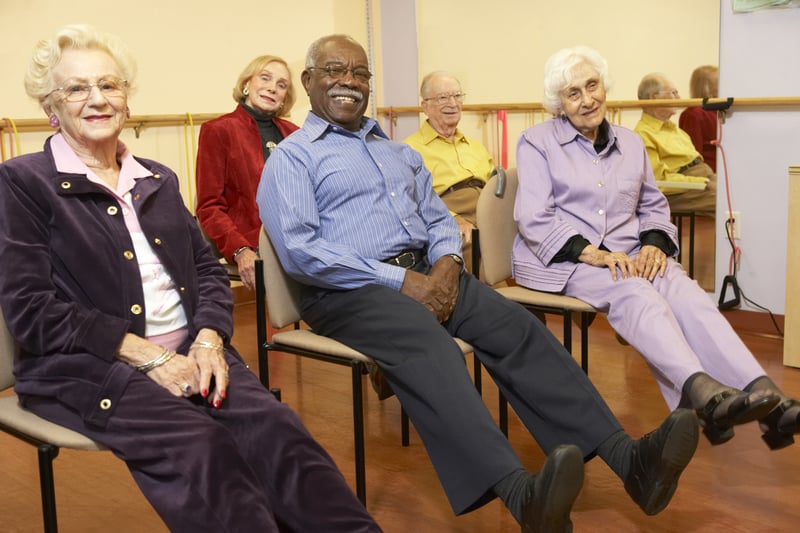
Here are some tips for eating well for COPD patients specifically:
- To lose weight: Choose fresh fruits and veggies over bread and pasta for the majority of your complex carbohydrates
- To gain weight: Eat a variety of whole-grain carbohydrates and fresh fruits and vegetables
- Limit simple carbohydrates, including table sugar, candy, cake and regular soft drinks.
- Eat 20 to 30 grams of fiber each day, from items such as bread, pasta, nuts, seeds, fruits and vegetables
- Eat a good source of protein at least twice a day to help maintain strong respiratory muscles, you can try all of these options: milk, eggs, cheese, meat, fish, poultry, nuts and dried beans or peas
- Choose mono- and poly-unsaturated fats, which do not contain cholesterol. These are fats that are often liquid at room temperature and come from plant sources, such as canola, safflower and corn oils. If you are trying to lose weight, you do not need to add these to your meals.
- Limit foods that contain trans fats and saturated fat. For example, butter, lard, fat and skin from meat, hydrogenated vegetable oils, shortening, fried foods, cookies, crackers and pastries.
Even though these suggestions are developed for people with COPD, speak with your doctor or a nutritionist about the best diet for you.
Dieting and regular exercise does not come easy to everyone, having a support system that is willing to cut out some junk food and focus on exercise more often is life changing for people with COPD.
Don't eat big meals

If you have COPD you should avoid the feeling of being “too full”, you might have noticed that you feel breathless after eating large meals. If you feel like you do not have an appetite, eating smaller meals can also help you get the nutrition your body needs. Breathing when you have COPD is more challenging and therefore requires you to burn more calories, so you should be sure that your meals provide high quality nutrition. To learn more about the type of meals you should be eating and how often, speak with a registered dietitian to help you understand how to make the most of your calories.
There are also lung specific diets that contribute to heart and lung health. Creating a food plan can be overwhelming, so having a buddy or partner that can do it with you is always a motivating factor.
Whatever you have to do to manage your diet, you should do. Whether you have to spend a little bit of money on a nutritionist or spend more at the grocery store to buy healthier foods rather than cheap junk foods.
While you might have to start spending more money to eat better, we will discuss in a later section ways you can supplement these expenses by saving money in other aspects of your life.
Do save money

Having COPD is not free, unfortunately there are costs associated with medications, hospital visits, oxygen devices, and much more. Depending on your financial situation, you might have to save money on certain things in order to pay for COPD treatments.
You can start by saving money on your COPD medication. Many people cannot afford the inflated prices of name-brand medications. Luckily, you can often find off-brand, generic versions of the same medication at a much lower cost.
If you want to save even more money on your medication, you can find other sources for your medication rather than your local pharmacy. Although they might be quick and convenient, brick-and-mortar pharmacies also tend to have the highest prices.
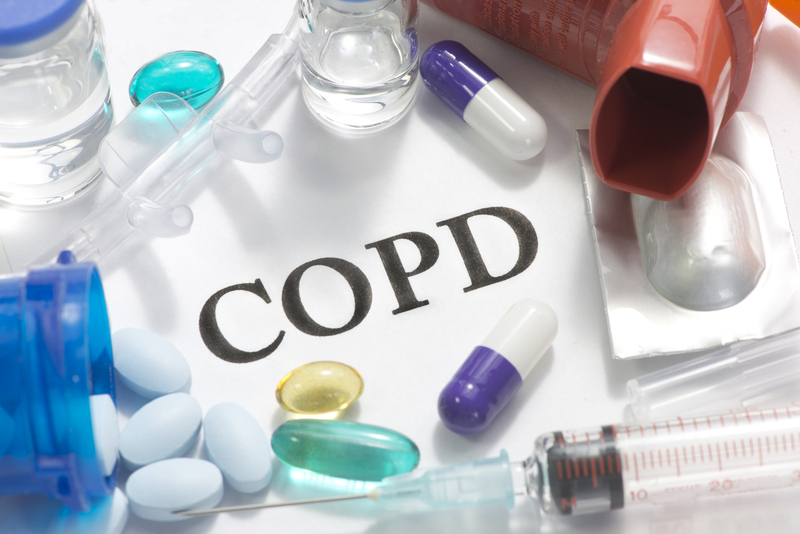
Many people don't realize that they have other options besides their local pharmacy. In reality, there are dozens or more legitimate online and mail-order retailers that sell prescription medications, too, and for less money. A certain amount of research about the online pharmacy is a precaution you should take thoroughly before entrusting it with your prescription. While many are trustworthy, some sites are unreliable, lack quality control, and even sell potentially dangerous counterfeit medications.
Here is a resource for you to learn more about saving money on your COPD medication: link
Hospital visits can also cost a pretty penny, and for the sake of your health and wallet, we hope you can avoid emergency and hospital visits if at all possible. However the truth is, you might experience an exacerbation that requires medical attention.
The way you can save a lot of money is being capable of determining when you need to go to the hospital and when you can confidently take care of yourself from home and just call your doctor. This is where COPD education and management comes into play.
You should feel confident and equipped to handle your COPD symptoms especially if they are not too severe. One of the best ways to avoid hospitalization is knowing which of your COPD exacerbation symptoms require emergency care.
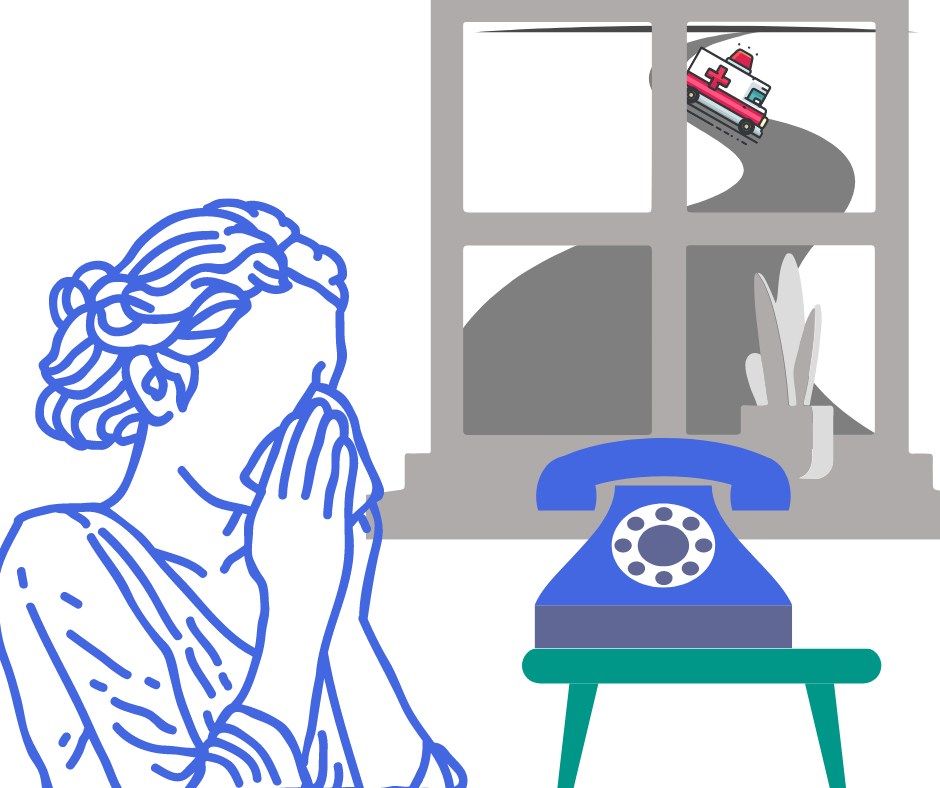
An exacerbation happens when your lungs do not make the exchange of gases that is required in order to breathe. After your body uses oxygen, carbon dioxide is left on the inside. Your lungs are responsible for exchanging oxygen with carbon dioxide, essentially this is what inhaling and exhaling is.
A person with COPD has more difficulty inhaling and exhaling because their lungs don’t work as well. This could lead to a buildup of carbon dioxide and reduced oxygen levels.
If carbon dioxide builds up in your body or oxygen levels become too low, it can become deadly. Symptoms of too much carbon dioxide in your body include:
- Confusion
- Severe headache
- Difficulty walking even short distances
- Having a hard time catching your breath
If these symptoms occur, then it’s important to seek immediate medical attention.
If you have COPD, physical activity will typically leave you short of breath and this is not a reason to seek medical attention every time. But during an exacerbation, your symptoms can get much worse than normal.
{{cta('43b79c5e-6bd6-4f02-ac27-2d038d20c146','justifycenter')}}
Examples of COPD exacerbation symptoms include:
- Breathing in a fast and shallow pattern, as if you’ve just exercised very intensely
- Coughing persistently and more than normal
- Experiencing shortness of breath at rest or with minimal activit

